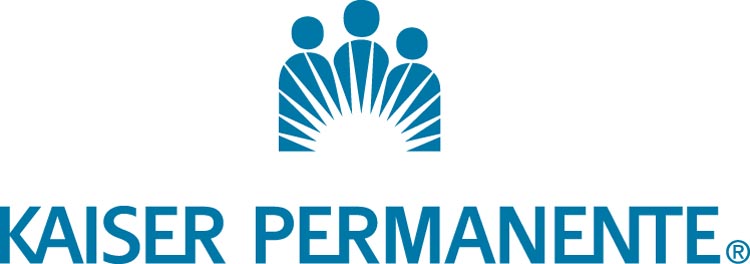In case you’re not familiar with it, “hat trick” is a sports term referring to a team or individual winning a championship three times in a row. But hat tricks can occur in the corporate world, too. For the third successive year, Kaiser Permanente has been ranked DiversityMBA’s number-one company for diverse managers to work — the first time any company has achieved this.
Kaiser scored in the top 10 in five of the six categories that comprise the Best in Class companies. When it comes to retention and inclusion, accountability, board diversity, representation, and succession planning, Kaiser is a leader. It also made the top 15 in recruitment.
But Kaiser’s commitment to diversity is old news. Today’s headline is that it is trying to best itself and redraw the diversity landscape, driving it wider and deeper into the organization.
“We’re deeply honored to be recognized three years in a row,” says Kaiser CEO George Halvorson. “Our senior leadership continues to grow in diversity. We just named three group presidents. All three are examples of the great depth and talent that we get from being diverse.” He adds that the organization this year is striving to have the safest hospitals in America. “We believe that hospital patients should receive both great care and safe care. Our goal is to be the national leader in both areas.”
It is also no time to rest on diversity accomplishments from the past. “In the middle of 2010 we were feeling quite good about all the recognition we had been getting for diversity, but George challenges us to go to another level, to set a new bar, to integrate our diversity work into all operations at the national and regional level, to drive diversity through all activities,” says Ray Baxter, Kaiser senior vice president of community benefit, research and health policy. “We reassessed what we had accomplished over the last five years and it was considerable. But some areas were not satisfactory. We took a hard look at what had and hadn’t been done.”
The self-examination lead to a refined, ambitious diversity strategy based on the existing pillars of care (providing culturally competent care, eliminating disparities), workforce (optimizing a culturally inclusive environment), marketplace, and community.
Community, Culture Leading Areas
At the heart of the push is community. Kaiser will put renewed energy toward health disparities. “We are increasing our focus on community collaborations now, asking how we can serve the diversity and community agenda,” says Ronald Copeland, president of Kaiser’s Ohio region and leader of its national diversity council. The company continues to seek ways to use its technology, data, and scientific knowledge with safety-net organizations that have intimate familiarity with the community. He offers an example: An organization didn’t have the resources to track data for diabetics. Kaiser provided the necessary systems and a year later, there has been an increase in getting optimal outcomes. “The safety-net groups can deal with social economic issues like the fact that people may not have transportation to go where they need to get testing done,” says Copeland. “They can address non-medical issues and with our medical and scientific expertise that’s a combination that can get results.”
Kaiser Permanente also wants to offer culturally competent care. “We are focusing on training our staff to be culturally competent,” Baxter notes. “Patients can expect to be treated with respect by someone who knows the culture, recognizes that some diseases are more common in certain populations, and is capable of addressing the differences.”
The Institute for Culturally Competent Care provides tools, skills development training, consultation, and educational resources for providers and clinicians. An example of the work being done is that of the Kaiser Permanente School of Anesthesia, housed administratively at California State University, has, through its collaborative work with the Institute, become the first nurse anesthesia program in the Western U.S. to incorporate a formal cultural competence curriculum into its educational program. The Institute has developed a four-module, 16-hour training curriculum in culturally competent care for providers, which offers a glimpse into the next generation of diversity management.
In a similar area, Kaiser has enhanced its linguistic services. “We have live online translators who are certified medical interpreters,” says Copeland.
“It’s not acceptable in America that there are health disparities, that there are such different outcomes,” Baxter says, noting that even among Kaiser’s own patients, there are disparities. For example, persistent blood-pressure control is achieved more commonly for Caucasians than African-Americans and Hispanics. Cancer is found later in African-Americans who are more likely to die from the disease, and diabetes is more common in Latinos. “We don’t fully understand why different diseases are more or less prevalent, but we used to just accept the differences,” he says. “Now we don’t accept it as a fact of life. We’re setting ambitious goals for change.”
Kaiser has nine centers of excellence. Each focuses on specific clinical programs that reflect the health needs of its local population, such as African-American, Latino, Armenian, persons with disabilities, women, American sign language, Cantonese, Mandarin, Russian, and Spanish speakers. The centers concentrate on achieving improved outcomes for their targeted populations, attaining higher efficiencies in care delivery, and developing replicable delivery models.
Deeper Community Efforts
But Kaiser’s reach isn’t just within its membership. In approximately 40 communities, it has supporting collaborations with residents, taking on obesity, healthy eating, improving the quality of food in schools, the lack of quality grocery stores, and limited safe areas for physical activity. “It has to be safe to be outside,” Baxter says. “School fields should be open after school, and there should be areas where there are sidewalks so people can walk. You can’t wag your finger at people for not eating healthy, not exercising, when they don’t have access. We’re working with community partners to help improve it.”
This year Kaiser and community partners launched Every Body Walk! to start a national conversation about the health benefits of walking. The online educational program (www.everybodywalk.org) contains news and resources on walking, health information, walking maps, how to find walking groups in your area, and more. Kaiser is one the partners with First Lady Michelle Obama’s Let’s Move! campaign to battle childhood obesity. Kaiser co-founded an independent nonpartisan foundation, Partnership for a Healthier America, to support the effort. “We’re partnering with public hospitals and local health departments to help them with the uninsured,” says Baxter.
“We’re convinced that we can present the best care, but people’s lives are shaped by where they live, work, and go to school. We have to be actively intervening there, for them to become healthier.”
Despite the impact of the recession, Kaiser was able to contribute more than ever to enhance the health of communities – in 2009 it invested $1.7 billion, a 43% increase over 2008. Kaiser helps cities get safe playgrounds and free swimming pools. It also provided more than $167 million in charity care in its hospitals and clinics. In 18 communities, it gave 200 people cameras so they could document unhealthy conditions in their neighborhoods and bring the pictures to the attention of school boards, city councils, and other decision-makers. There have been many positive results, from closing liquor stores that were crime magnets to making local parks more family friendly.
Suppliers
Another piece of the refined diversity equation is supplier diversity. A big driver of health disparities is poverty. “If you don’t have a job, you likely don’t have health coverage,” says Copeland.
Simply put, it’s about the economy. For that reason, Kaiser is stepping up its supplier diversity game. It’s not like the company is starting from scratch. In 2010, Kaiser spent $610 million with diverse suppliers. At the recent Northern California Minority Supplier Development Council awards gala, the company won Corporation of the Year, also taking the award for the third year in a row. In Cleveland, Kaiser Permanente Ohio was voted into the Hall of Fame for its supplier diversity. “But we’re not content. We have a $1 billion target for spending with diverse suppliers,” says Copeland.
If minority businesses have access to large contracts with Kaiser, it will go a long way in sustaining them, which means they can hire and therefore create an economic lift to the community. “When economics improve, health care usually rises too,” says Copeland. “It’s not about having bragging rights about how much is spent with diverse suppliers. This is about building communities economically.”
Internal. Too
Headquartered in Oakland, CA, Kaiser was founded in 1945 and is comprised of Kaiser Permanente Foundation Health Plan Inc., Kaiser Permanente Foundation Hospitals and subsidiaries, and the Permanente Medical group. It has 8.6 million health-plan members and in 2009 had operating revenues of $42.1 billion.
At a time when survey after survey shows that many employees want an employer who is socially conscious and a good corporate citizen, Kaiser’s own practices and work in the community is point of pride for the 175,000 employees and physicians who make up its workforce. Kaiser’s strides in diversity have earned it regard from many organizations. Most recently, it was honored with the 2011 Catalyst Award for its “innovative and dynamic initiatives advancing women in the workplace.”
Kaiser has one of the most diverse boards among major corporations. Its composition is 36% women and 50% people of color. People of color and women also comprise the majority of its workforce – 58% and 77%, respectively. Diversity goals are an integral part of executive performance reviews among the top leaders of the organization. Executive compensation, including bonuses and raises, are linked to meeting diversity goals, and Halvorson personally signs off on executive compensation tied to diversity.
But the applause is no reason to slow down. “I don’t believe you ever get to the end with diversity,” says Copeland. “There is continuous improvement, the landscape changes, and you must always push to stay ahead of the curve to be more efficient, more affordable, to have greater impact. This is a journey, not a destination.”





